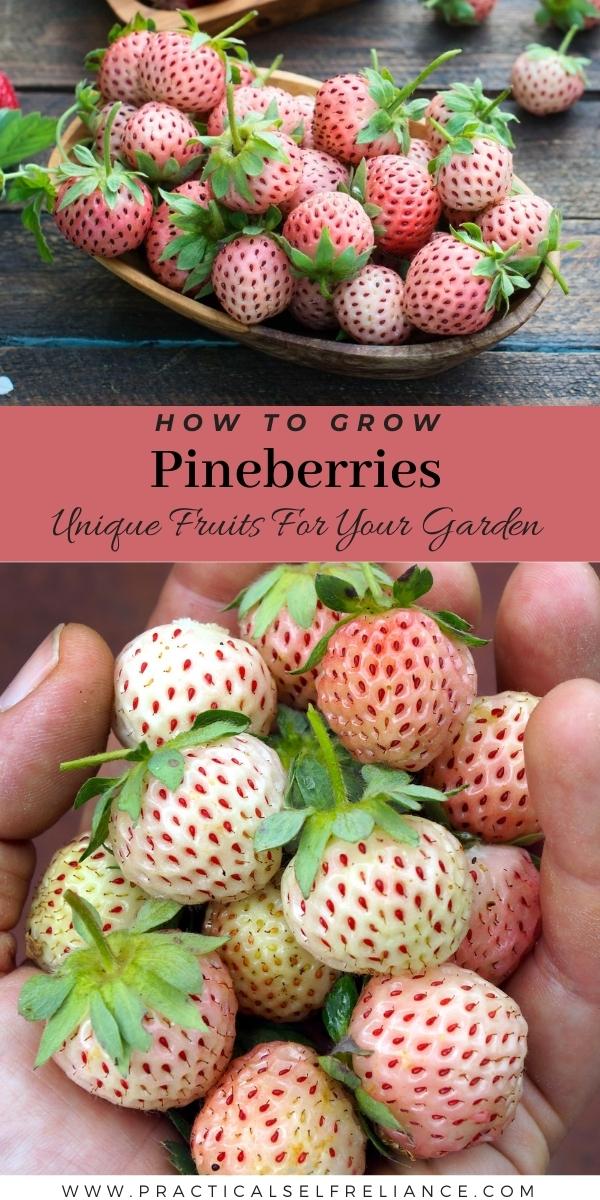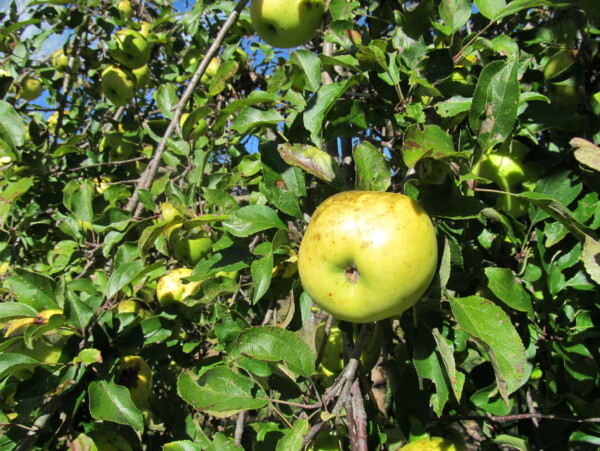Affiliate disclosure: This post may contain affiliate links. Please see our Privacy Policy.
Pineberries are a striking addition to any home garden, and they’re both delicious and easy to grow.
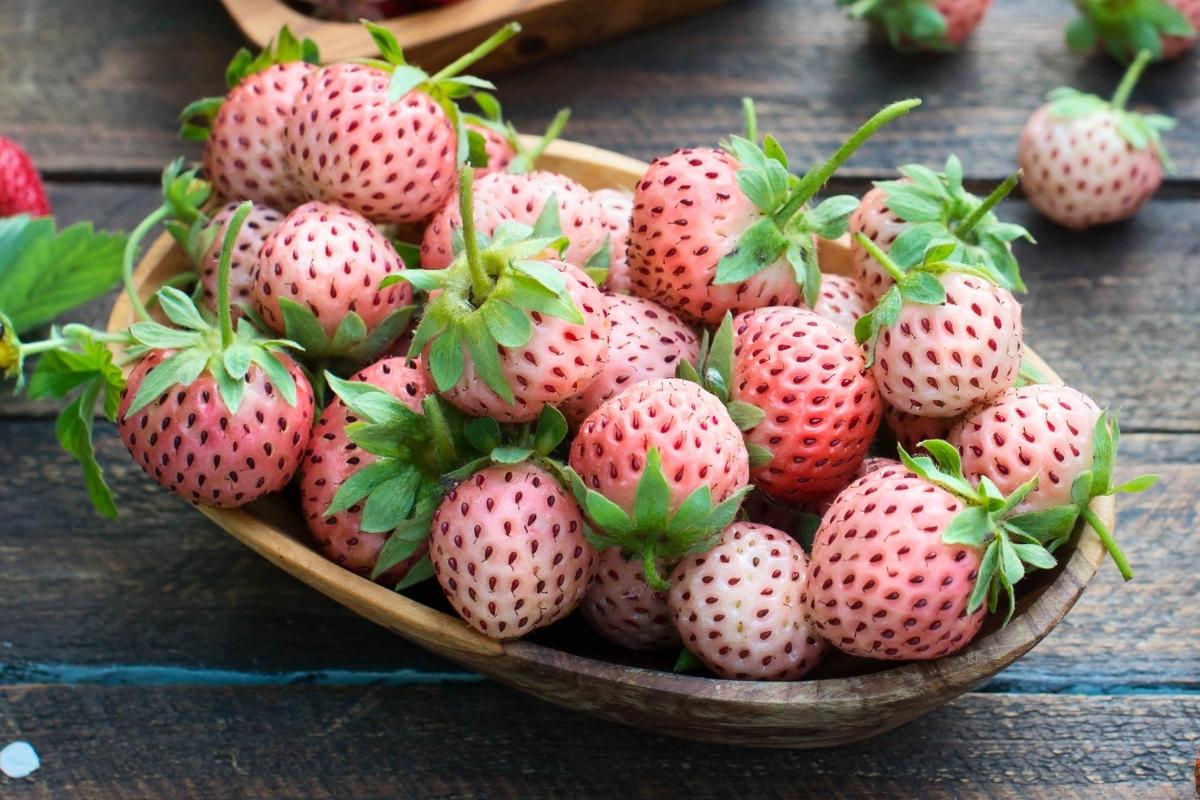
Pineberries are white-pink berries with amazing tropical pineapple-like flavor. They look a bit like unripe strawberries with bright red seeds, and that white color keeps the birds from eating your crop.
They are, in fact, a new type of hybrid strawberry that ripens to a pink/white color, produced through natural plant breeding (not genetic engineering).
Though they’re very occasionally available in specialty markets, these delicious berries are incredibly hard to find. (Though there are a few places online where you can order them if you’d like to try them before growing them at home.)
You may be surprised to learn how easy it is to grow pineberries in your own garden or in pots, and that’s one of the best ways to get the freshest fruit around.
If you can get your hands on some pineberry cuttings or bareroot plants, you’re already well on your way to successfully growing healthy, pineberry plants.
I’m going to take you through every aspect of growing pineberries as well as offer tips for choosing and buying the best plants, creating ideal soil and sun conditions, as well as ideas for getting creative with other strawberry varieties in the garden.
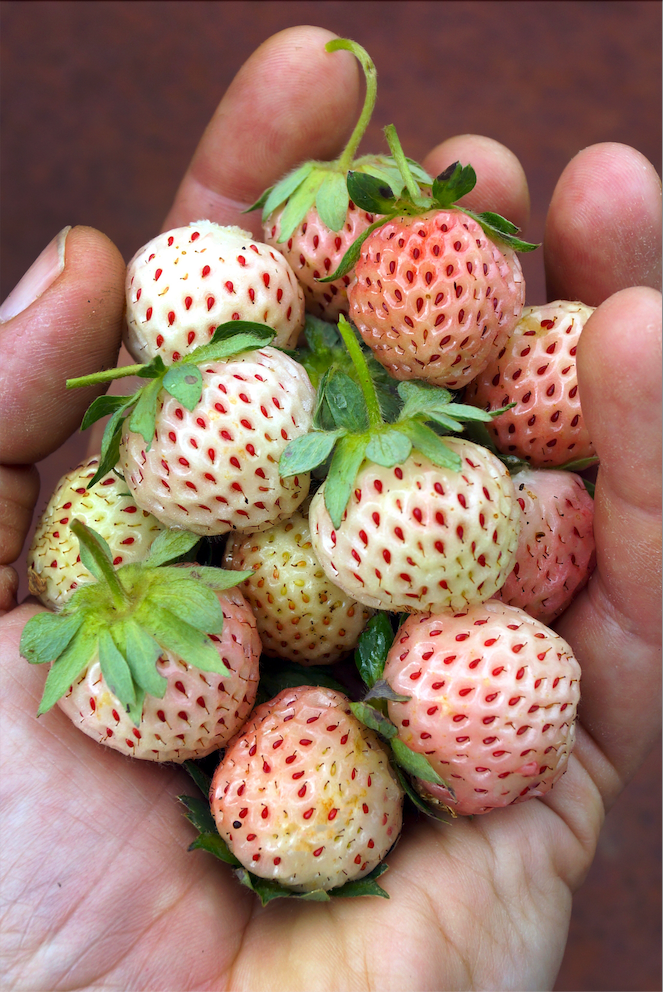
What Are Pineberries?
The pineberry is a relatively new cultivar of the common garden strawberry (Fragaria x ananassa), and is a cross between the Chilean Fragaria chiloensis strawberry and the North American Fragaria virginiana strawberry.
Pineberries were originally found growing in South America and were then bred in the Netherlands. In 2010, pineberries became commercially available and were marketed as a type of exotic fruit.
You can still find claims on the internet that pineberries are genetically engineered in a lab, but in reality, it’s just another example of nature doing what it does best — creating a new hybrid on its own!
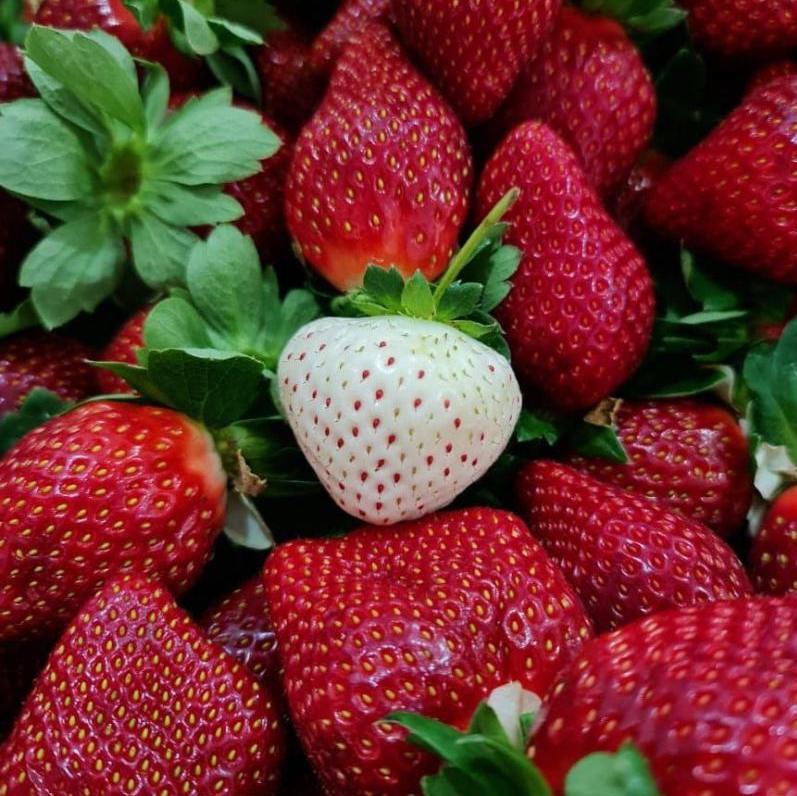
How Do Pineberries Taste?
Despite bearing a striking resemblance to unripened strawberries, pineberries taste a lot more like pineapples than they do to the familiar red berries.
Texture-wise, pineberries are very similar to strawberries but that’s where the similarities end. Pineberries taste surprisingly tropical, with notes of caramel and clove when fully ripe.
Pineberries are perfect for eating whole or slicing up and adding to fruit salads. I think pineberries taste best at room temperature, although I recommend keeping pineberries chilled until about 30 minutes before you plan on eating them.
They’re incredibly perishable, more so than regular strawberries which have been bred for long shelf life. That’s one reason they’re not the best when purchased from a market. Make sure you keep them cool until serving, or just eat them fresh right out in the garden.
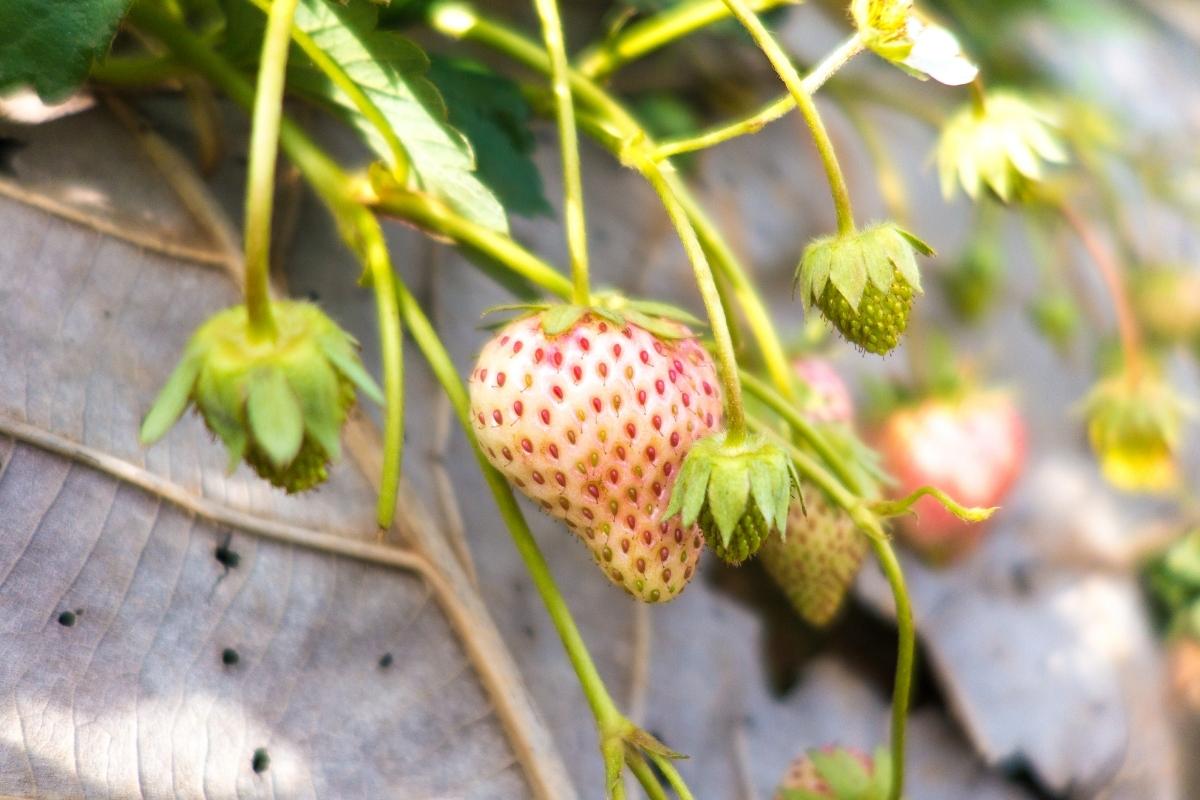
Where to Buy Pineberry Plants
When pineberries first became commercially available, it was near impossible to find cuttings so that you could grow your own (unless you had a generous friend who was willing to help you out). Now, they’re readily available online, but they haven’t made it to most local nurseries.
Generally speaking, it’s more cost-effective to purchase pineberry bare-root plants in the early spring. Single potted plants often sell for $25 to $40 each, but you can get bare-root plants for about $1-2 each.
Most online nurseries only sell single potted plants, because the markup is so good, but it is possible to find them bare-root if you search hard enough. I’ve actually found the best place to buy bare-root pineberry plants is on Etsy, and I ordered mine from this etsy shop. You can also buy pineberry cuttings through Amazon.
It’s easy to find pineberry seeds for purchase online, but they won’t grow actual pineberry plants.
Because pineberries are a hybrid plant, any plants that are grown from seed will most likely revert back to one of either of its parent plants. They really do need to be grown from cuttings to ensure success, so only purchase potted or bare root pineberries to grow at home.
How to Grow Pineberries
As I mentioned above, if you want to grow pineberries they must be grown from cuttings, not seeds. You might be able to find seeds to buy, even from reputable sources, but you’ll most likely be disappointed when your plant grows regular strawberries (and this is the best-case scenario, you might not grow a plant with any berries at all).
When your cuttings are gathered, it’s time to pot them in individual planters. While you can plant them directly in the ground once the threat of frost has passed in early spring, planting them in pots and letting them grow in a warm and sheltered place will yield hardier plants.
Pineberry plants will grow outdoors in USDA hardiness zones 4-8, and they do well indoors over cold winters if kept in pots.
You can let pineberry dieback outdoors over the winter, just make sure the plants are covered with a thick but loose layer of mulch once the temperature hits 20° F — the tops of plants should be just covered.
We have the luxury of an attached greenhouse, which is perfect for nurturing plant cuttings before they go in the ground, but any warm place indoors with lots and light and minimal drafts will also work well.
Beginning your pineberry cuttings indoors will also help the plants get a head start in terms of bearing fruit, which most plants won’t yield if the roots are planted directly in the ground.
While nurturing the cuttings early doesn’t guarantee the presence of berries, it does increase the chances you might get see fruit growing the first year.
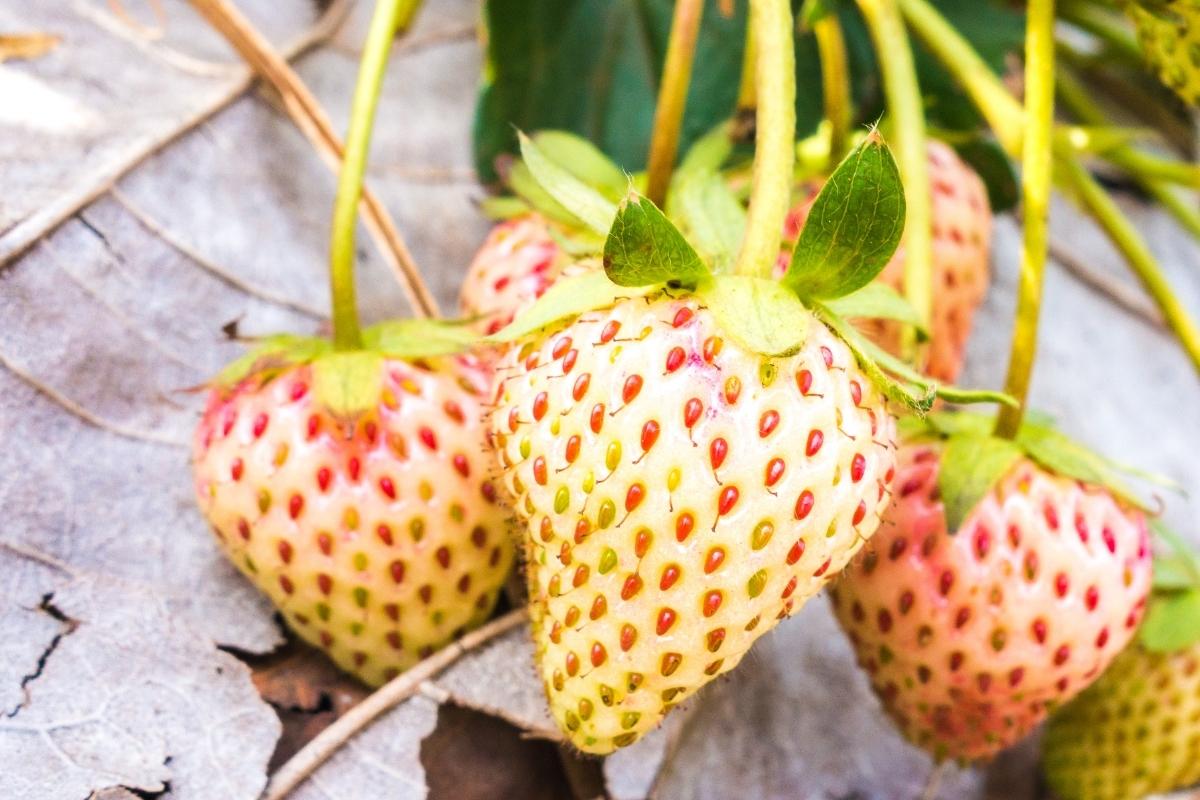
How to Plant Pineberry
Ideally, pineberry cuttings should be planted outdoors (or moved in containers outdoors) in early spring, when soils have warmed but there are still occasional light frosts. Where I live, in Vermont, this is typically sometime in April, but late February or March isn’t uncommon in warmer locations.
Pineberry plants are known for taking over entire gardens, so you might find planting them in pots easier to manage.
For pollination purposes, it’s recommended that a regular strawberry plant is installed nearby in order to get the biggest yield of pineberries. Sonata and Natural Albino varietals are considered to be the top pollinators when it comes to pineberry varieties.
The most common ratio I’ve found for planting pineberry cuttings to regular strawberry plants is 4:1, with at least 1 regular strawberry plant to every 4 pineberries to ensure pollination.
Pineberry Plant Spacing
Unlike regular strawberry cultivars, pineberry cuttings don’t need quite as much room to grow, although they’ll still likely produce runners which can be used to propagate more plants. You should space each pineberry cutting so that there is 18 to 24 inches between each plant.
Don’t plant the cuttings any deeper than the top of the root crown where the leaves sprout out.
Pineberries are a favorite of many types of pollinators, so make sure they have full access to the plants, which will eventually form tiny white flowers later in the spring.
Once the pineberries are planted outdoors, give them a good watering and add a thin layer of mulch.
Pineberry Plant Care
Pineberry cuttings should be planted in rich soil that has been supplemented with good quality compost. Pineberries especially love loamy soil, denser types of soil should be further supplemented with organic matter to help with drainage.
The plants should be kept well-watered, but resist the urge to water too frequently — this can promote root rot. Be careful to avoid watering the actual leaves and focus on the soil only.
Keep a thin layer of mulch spread around the plants during the growing season, we like to use straw or wood chips.
To make sure the pineberries aren’t being eaten by birds and other critters, install a chicken wire fence around the plants.
Because pineberries look unripe even when they are ripe, the best indicator for ripeness is when the seeds turn a bright red color. You might notice the berry turns a creamier shade of white, but it can be difficult to tell the difference using color alone.
Slugs love pineberries, so I like to pile up a thin layer of mulch under the plant to prevent them from eating all the berries in sight.
Unique Strawberry Cultivars
Pineberries are a fun one to grow in in your garden, but they’re just the beginning. There are actually a number of really unique strawberry varieties you can try.
- June-Bearing Strawberries are a variety of strawberry plant that loves hot summers, typically producing fruit in spring to early summer. The plants are quite delicate and especially sensitive to cold. The berries are extra-sweet and bursting with flavor and appear only once over the course of a few weeks (usually in June).
- Everbearing Strawberries will produce berries over the course of months instead of weeks. Everbearing strawberries are considered more challenging to grow, and need to be planted on a raised bed for best results, the plants are also swapped out annually instead of dying back over the winter.
- Alpine Strawberries (also known as Woodland Strawberries or fraises des boise) are small, cone-shaped strawberries with big flavor! Alpine strawberries don’t produce runners, but instead grow in clumps. This type of strawberry does particularly well growing in containers or hanging baskets.
- Strasberry is a garden strawberry that looks like a raspberry! While the original Strasberry plant (invented in 1925 by a German breeder named Otto Schindler) needs a pollinator, the more recent Framberry is self-pollinating.
- Musk Strawberry is native to Europe and is also called an hautbois strawberry. With a flavor that’s described as being a cross between pineapple, raspberry, and strawberry, this type of strawberry is mainly grown for commercial use in Italy.
- Mock Strawberry (Potentilla indica) is a plant that bears fruit with a striking resemblance to strawberries, but with a decidedly less appealing flavor. Unlike strawberry plants, which have white or very pale pink flowers, the mock strawberry’s petals are yellow.
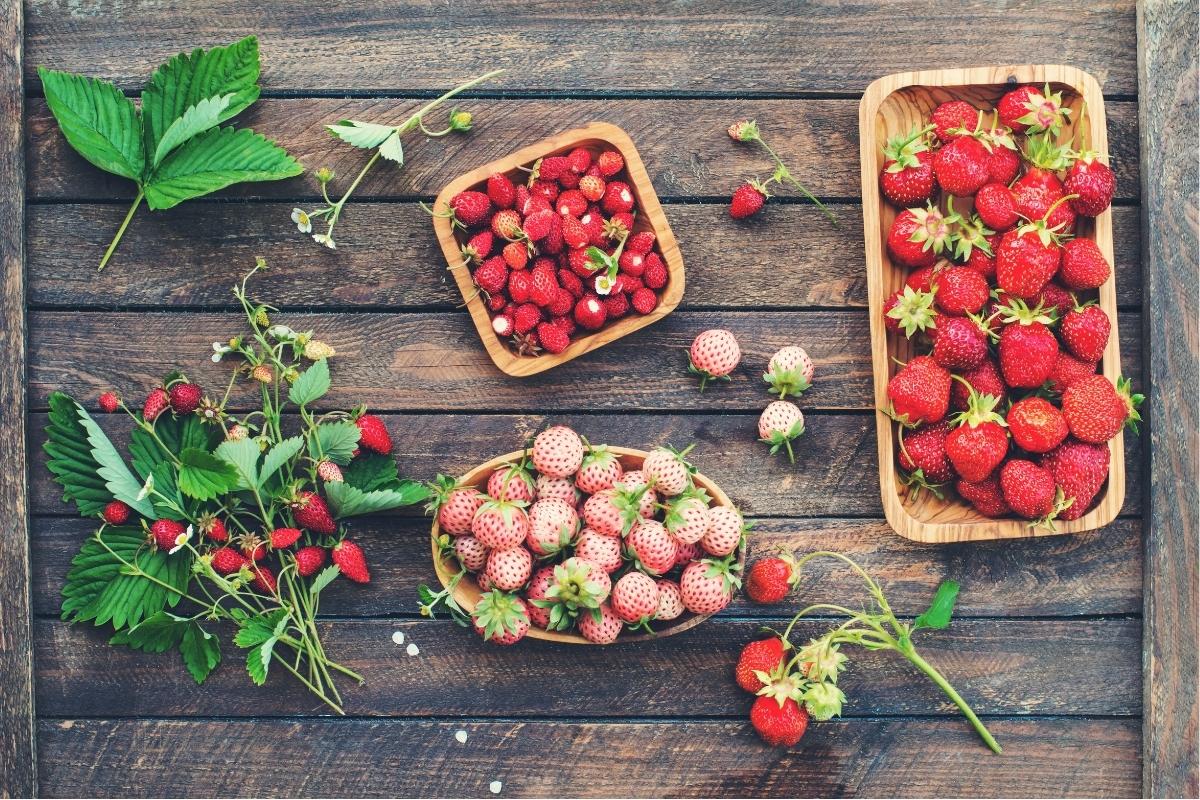
Unique Fruit Varieties
Besides strawberries, there are all manner of fun fruits you can grow right in your backyard that you’d never find in the store.
- Honeyberries (Haskaps)
- Lingonberries
- Salmonberries
- Shipova
- Cornelian Cherries
- Nanking Cherry
- Hardy Kiwi (or Kiwi Berry)
If that’s not enough, here’s a list of more than 60 unique fruits and nuts that are easy to grow, and hardy even in cold climates (zones 3 to 6).
Don’t have garden space? Here are more than 50 edible wild berries and fruits you can forage in the US (and elsewhere too).
